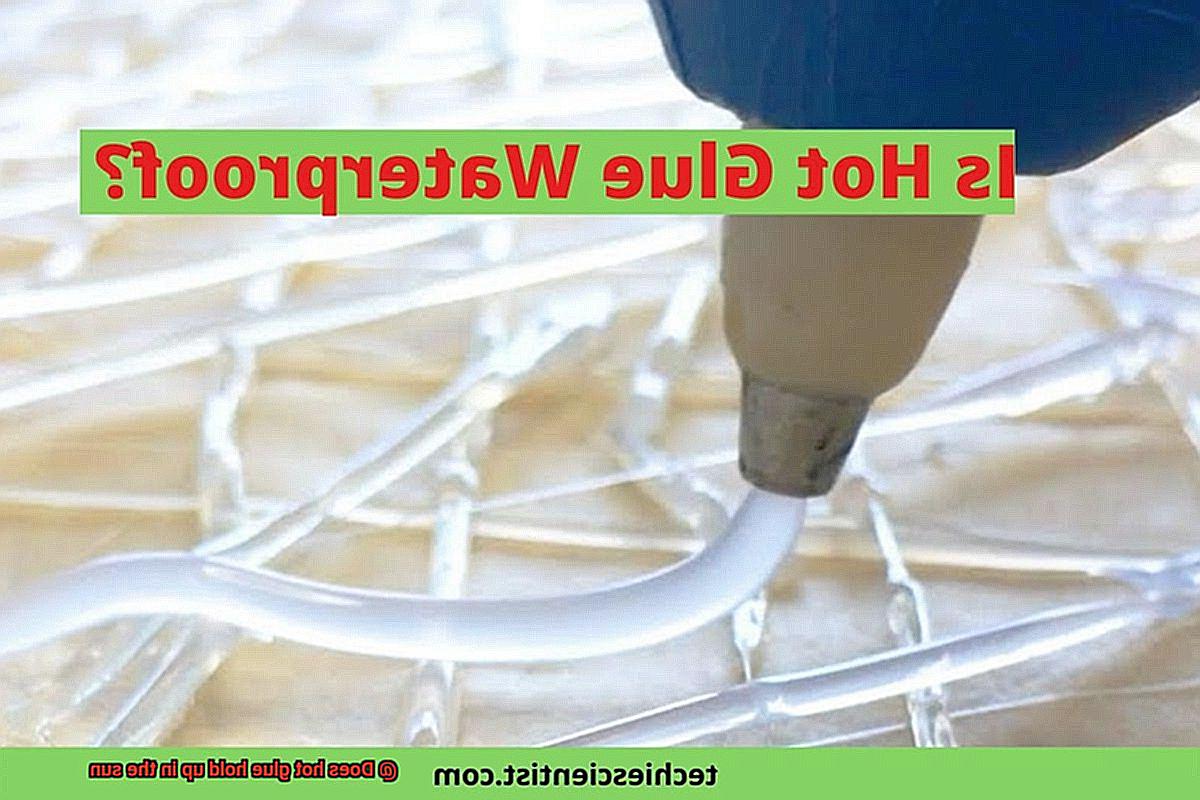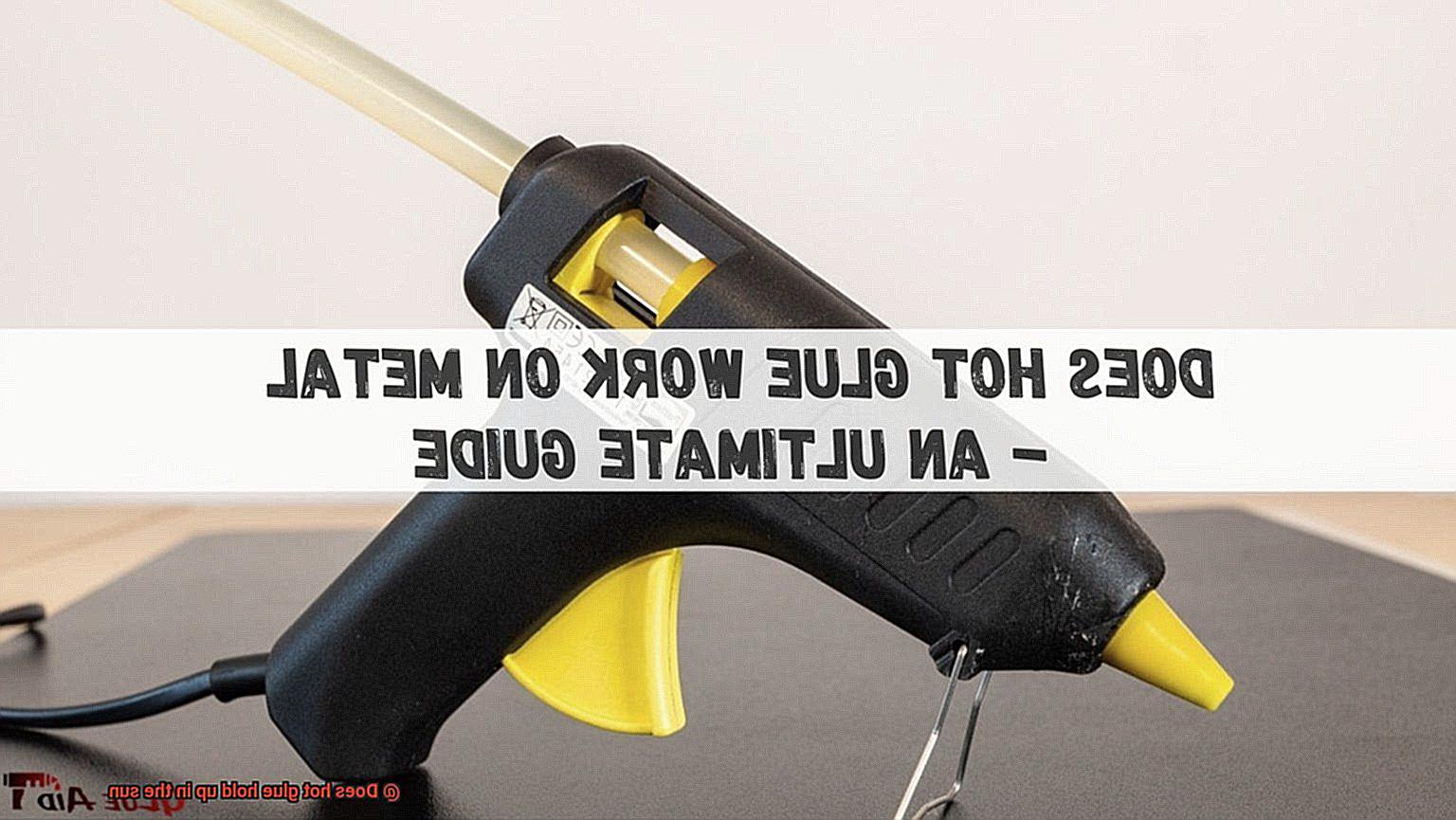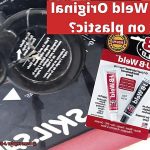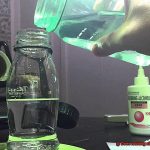Are you tired of dealing with sticky, messy adhesives for your outdoor DIY projects? Do you crave a reliable adhesive that can withstand the sun’s harsh rays? Well, look no further than hot glue. As an expert on adhesives, I’ve delved deep into the question: does hot glue hold up in the sun?
Hot glue is a versatile adhesive that can be used on a wide variety of materials. However, its effectiveness outdoors has been subject to debate. When exposed to direct sunlight and high temperatures, hot glue can melt and lose its adhesive power over time. But fear not. Many factors such as the type of hot glue used and frequency of exposure to sunlight can affect its durability.
In this blog post, we’ll explore the science behind how hot glue reacts to sunlight and delve into best practices for using it in outdoor projects. You’ll learn about different types of hot glue that can withstand sun exposure and other types better suited for indoor projects.
So whether you’re planning your next outdoor craft or repairing an item that needs to stand up against the elements, this blog post will provide useful insights into the question: does hot glue hold up in the sun? Get ready to discover everything you need to know about this versatile adhesive and make your next project a success.
How Does Hot Glue React to Sunlight?
Contents
- 1 How Does Hot Glue React to Sunlight?
- 2 Factors that Affect the Durability of Hot Glue in Sunlight
- 3 Types of Hot Glue Ideal for Outdoor Use
- 4 Advantages of Hot Glue for Outdoor Applications
- 5 Disadvantages of Using Hot Glue Outdoors
- 6 Tips and Tricks for Using Hot Glue Outdoors
- 7 Alternatives to Hot Glue for Outdoor Applications
- 8 Conclusion
The answer lies in the science of UV radiation. UV rays present in sunlight can break down the chemical bonds in hot glue, causing it to lose its adhesive properties over time. Therefore, understanding how hot glue reacts to sunlight is crucial for ensuring the success of your DIY project.
Several factors affect how hot glue performs in sunlight. Firstly, the intensity and duration of exposure play a significant role in how quickly hot glue degrades. Secondly, the type of hot glue used can also impact its resistance to UV rays. Hot glue made with EVA (ethylene-vinyl acetate) is more resistant to UV rays than traditional formulations made with ethylene or vinyl acetate alone. Thus, choosing a specialized formulation with UV resistance specifically designed for outdoor use is essential.
Additionally, temperature can impact hot glue’s performance in sunlight. High temperatures can cause hot glue to soften or melt, reducing its ability to bond materials effectively. Therefore, it’s crucial to consider both temperature and sunlight exposure when choosing hot glue for outdoor applications.
Factors that Affect the Durability of Hot Glue in Sunlight
Hot glue is a popular choice due to its quick-drying and easy-to-use nature. However, if you’re working on an outdoor project, you may wonder how well hot glue can hold up in sunlight. The answer lies in several factors that we’re going to explore in detail.
Firstly, the type of hot glue used is critical in determining its ability to withstand sunlight exposure. Outdoor hot glue is specially designed to be used outside and can hold up well even when exposed to sunlight for extended periods. These types of hot glue have a higher melting point and a stronger bond compared to indoor hot glue. So, if you want your project to withstand sunlight exposure, it’s crucial to choose the appropriate type of hot glue.
Another significant factor that affects the durability of hot glue in sunlight is the amount of time it’s exposed. The longer the exposure time, the more likely it is for the hot glue to break down and lose its adhesive properties. Therefore, it’s essential to consider how long your project will be exposed to sunlight so that you can choose a type of hot glue that can handle it.
Temperature also plays a crucial role in determining the durability of hot glue in sunlight. High temperatures can cause the hot glue to melt and lose its adhesive properties, while low temperatures can make it brittle and prone to breaking apart. Therefore, it’s vital to choose a type of hot glue based on the temperature range in which your project will be exposed.
Types of Hot Glue Ideal for Outdoor Use
Hot glue is a versatile adhesive that can be used in a variety of DIY projects. However, not all hot glues are suitable for outdoor use. It’s crucial to select the right type of hot glue that can withstand different weather conditions and provide strong and durable bonds. Here are five types of hot glue that are ideal for outdoor use.
High-Temperature Hot Glue
For outdoor projects in areas with high temperatures, it’s essential to choose a high-temperature hot glue. This type of glue can endure extreme temperatures, both hot and cold, making it perfect for use in outdoor projects. Hot glue sticks labeled as “high-temperature” or “extreme temperature” are the best choice to get the best results.
Weatherproof Hot Glue
A weatherproof hot glue is another great option for outdoor projects that will be exposed to rain or moisture. This type of glue is designed specifically to resist water and moisture, making it ideal for use in wet conditions. It can also protect the bond from breaking down due to UV rays, which makes it an excellent choice for outdoor projects that will be exposed to direct sunlight.
Specialized Outdoor Hot Glue
There are specialized outdoor hot glues available for specific outdoor applications such as gardening, landscaping, or automotive repairs. These glues are specifically designed to withstand the elements in these particular environments, providing durable and long-lasting results.
All-Purpose Hot Glue
If you’re looking for a versatile hot glue that can be used both indoors and outdoors, an all-purpose hot glue is a great option. Although it may not withstand extreme temperatures or moisture as well as specialized outdoor hot glues, it can still provide strong bonds and hold up well in most outdoor conditions.
Consider the Materials
When selecting the right type of hot glue for your outdoor project, it’s important to consider the materials you’ll be bonding together. Some hot glues work better on certain surfaces than others, so it’s essential to read the label carefully before making your selection. For example, if you’re bonding plastic or metal surfaces, you may want to choose a hot glue that is specifically designed for those materials.
Advantages of Hot Glue for Outdoor Applications
Hot glue is a true champion when it comes to the adhesive world, and its advantages for outdoor applications are numerous. Durability and water resistance are two of the most significant benefits of hot glue, making it an ideal choice for outdoor projects.

One of the biggest advantages of using hot glue for outdoor applications is its ability to withstand the sun’s harsh rays. Unlike other adhesives that can become brittle or weakened due to exposure to UV rays, hot glue maintains its strength and flexibility, allowing it to perform well even after prolonged exposure to the sun.
Hot glue’s quick and firm bonding ability is another key advantage for outdoor use. It can bond quickly and firmly to a variety of surfaces such as wood, metal, plastic, and more. This feature makes it a perfect adhesive for securing decorations or repairing outdoor furniture that requires a strong hold.
Moreover, hot glue is versatile enough to be applied in different weather conditions. It can be used in both warm and cold temperatures, making it a reliable adhesive for year-round outdoor projects.
The resistance of hot glue to water and moisture is another critical advantage that makes it an ideal choice for outdoor applications. The resistance ensures that the adhesive remains strong and effective even when exposed to rain or other sources of moisture.
Disadvantages of Using Hot Glue Outdoors
When it comes to outdoor projects, hot glue may seem like the go-to adhesive, but it’s important to know its limitations and potential drawbacks. Hot glue is not designed to withstand extreme temperatures, especially those found in direct sunlight. As the heat from the sun beats down, the glue can soften and break down, leading to a loss of adhesion and causing whatever was glued together to come apart.
Another disadvantage of using hot glue outdoors is its susceptibility to moisture. Wet or humid conditions can cause the glue to become less effective, making it more likely to fail when exposed to water or high levels of humidity. Additionally, hot glue doesn’t bond well with certain materials commonly found outdoors, such as metal or some types of plastic.
Applying hot glue outdoors can also be a challenge. Wind and other environmental factors can make it difficult to control the application of the glue, leading to messy or uneven results. This can be especially frustrating if you’re trying to achieve a neat and professional-looking finish for your project.
Overall, while hot glue can be a useful adhesive for certain outdoor projects, it’s important to keep in mind its limitations.
If you need an adhesive that can withstand extreme temperatures or difficult outdoor conditions, consider using a different type of glue or adhesive specifically designed for these purposes.
Don’t let the potential drawbacks of hot glue ruin your outdoor project – choose an adhesive that’s up for the challenge.
Tips and Tricks for Using Hot Glue Outdoors
Hot glue is an excellent adhesive for many outdoor projects, but its effectiveness can be compromised by sunlight exposure. Fortunately, there are some tips and tricks you can follow to ensure that your hot glue projects hold up in the sun.
Choose the Right Hot Glue
When selecting hot glue for outdoor projects, look for products with higher heat resistance and weatherproof properties. These products are typically labeled as “outdoor use” and can withstand temperature fluctuations and UV exposure.
Prepare the Surface
Proper surface preparation is essential for ensuring a strong bond. Clean the surface thoroughly and remove any dirt or debris that may interfere with the adhesive’s bonding ability. If the surface is rough or uneven, consider sanding it down to create a smoother surface for better adhesion.
Apply the Hot Glue Correctly
Applying hot glue evenly and in a thin layer is crucial to ensure maximum adhesion. Avoid thick or uneven layers, which can cause the glue to weaken or break down over time when exposed to the sun. Use a steady hand when applying the glue, and work quickly to avoid premature hardening or solidification.

Protect Your Project from Sunlight Exposure
Prolonged exposure to sunlight can cause hot glue projects to fade, crack, or peel. To prevent this, consider coating the finished project with a UV-resistant spray paint or varnish. This protective layer will help shield your project from harmful UV rays and keep it looking great for years to come.
Choose Proper Storage
When you’re not using your hot glue project, store it in a cool, dry place away from direct sunlight. Exposure to high temperatures can cause the glue to soften or melt, compromising its strength and effectiveness.
Alternatives to Hot Glue for Outdoor Applications
Don’t let hot glue’s limitations hold you back. As an expert in this field, I’ve done the research and compiled a list of the best alternatives to hot glue for outdoor projects.
First on our list is epoxy resin. This two-part adhesive creates a strong and durable bond that can withstand exposure to the elements. Whether you’re working on metal, wood, or concrete, epoxy resin will deliver a bond that won’t weaken over time. Plus, it’s resistant to water, heat, and chemicals, making it perfect for outdoor use.
Another top option is silicone adhesive. This flexible and waterproof adhesive dries clear and can withstand exposure to UV radiation from the sun without deteriorating. Silicone adhesive is perfect for use on a variety of surfaces and can withstand extreme temperatures, making it ideal for outdoor projects in areas with fluctuating temperatures.
If you need a stronger bond than hot glue can provide, try construction adhesive. This heavy-duty adhesive creates a permanent bond between two surfaces and can withstand exposure to the elements. It’s perfect for use on wood, metal, concrete, and brick.
Lastly, if you’re looking for an eco-friendly alternative to hot glue, consider using natural adhesives like plant-based or animal-based glues. These adhesives are made from natural materials and are biodegradable, making them perfect for outdoor projects where environmental impact is a concern.
qmCAX_obrNo” >
Also Read: How Much Weight Can Hot Glue Hold?
Conclusion
In summary, hot glue is a go-to adhesive for DIY enthusiasts who enjoy creating both indoor and outdoor projects. Although it may not be the perfect solution for every outdoor application, it can withstand sunlight exposure if you select the appropriate type and adhere to some essential tips and tricks.
When shopping for hot glue intended for outdoor use, prioritize brands that offer higher heat resistance and weatherproof properties. Proper preparation of the surface, even and thin application of the glue, shielding your project from direct sunlight exposure, and storing it in a cool, dry place are all crucial steps to ensure its longevity.
If hot glue doesn’t meet your requirements for a specific outdoor project, there are numerous alternatives worth exploring. Epoxy resin, silicone adhesive, construction adhesive, and natural adhesives are all excellent options depending on your unique needs.
Ultimately, comprehending how hot glue reacts to sunlight is essential to guarantee its effectiveness in outdoor projects.






